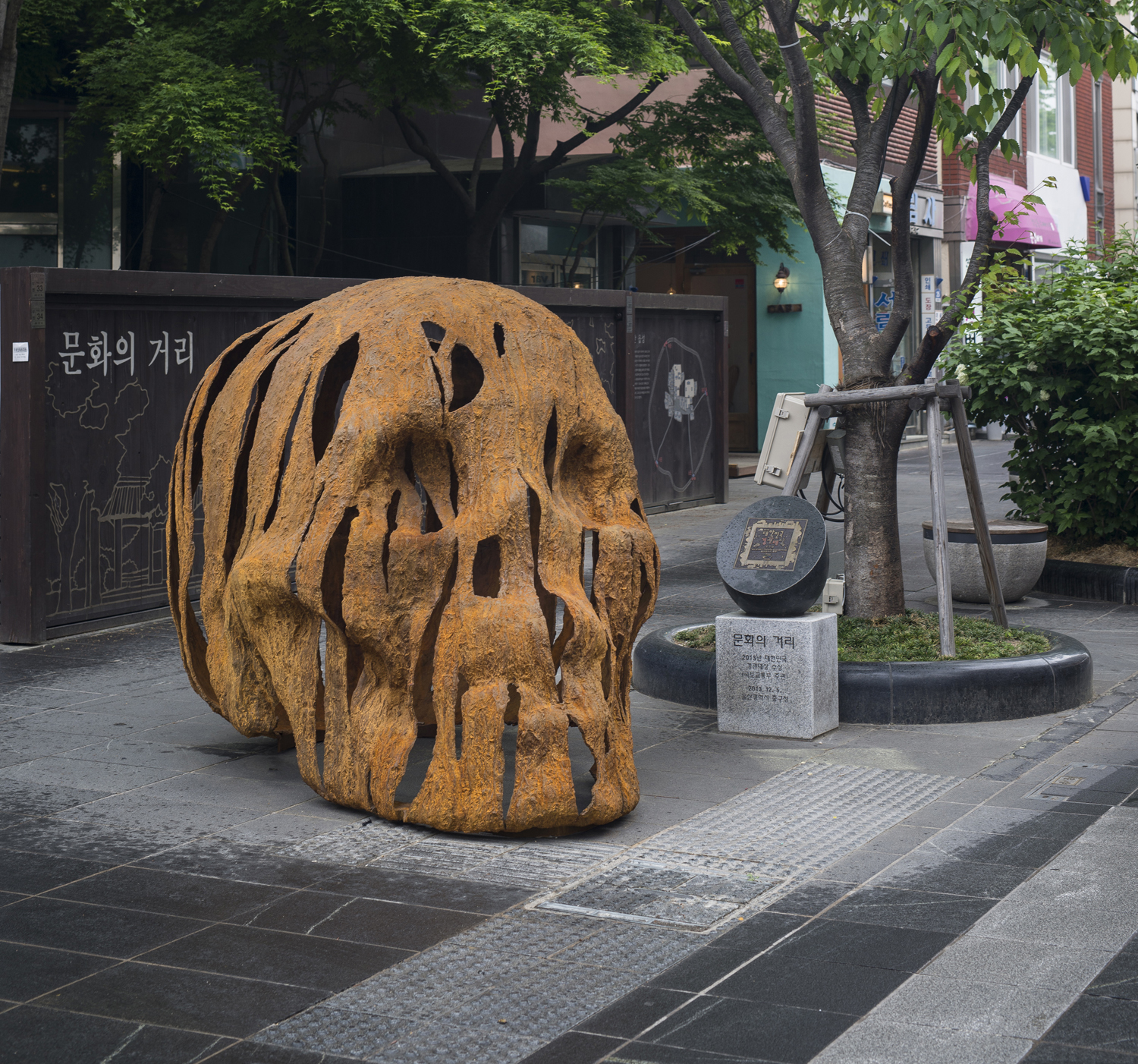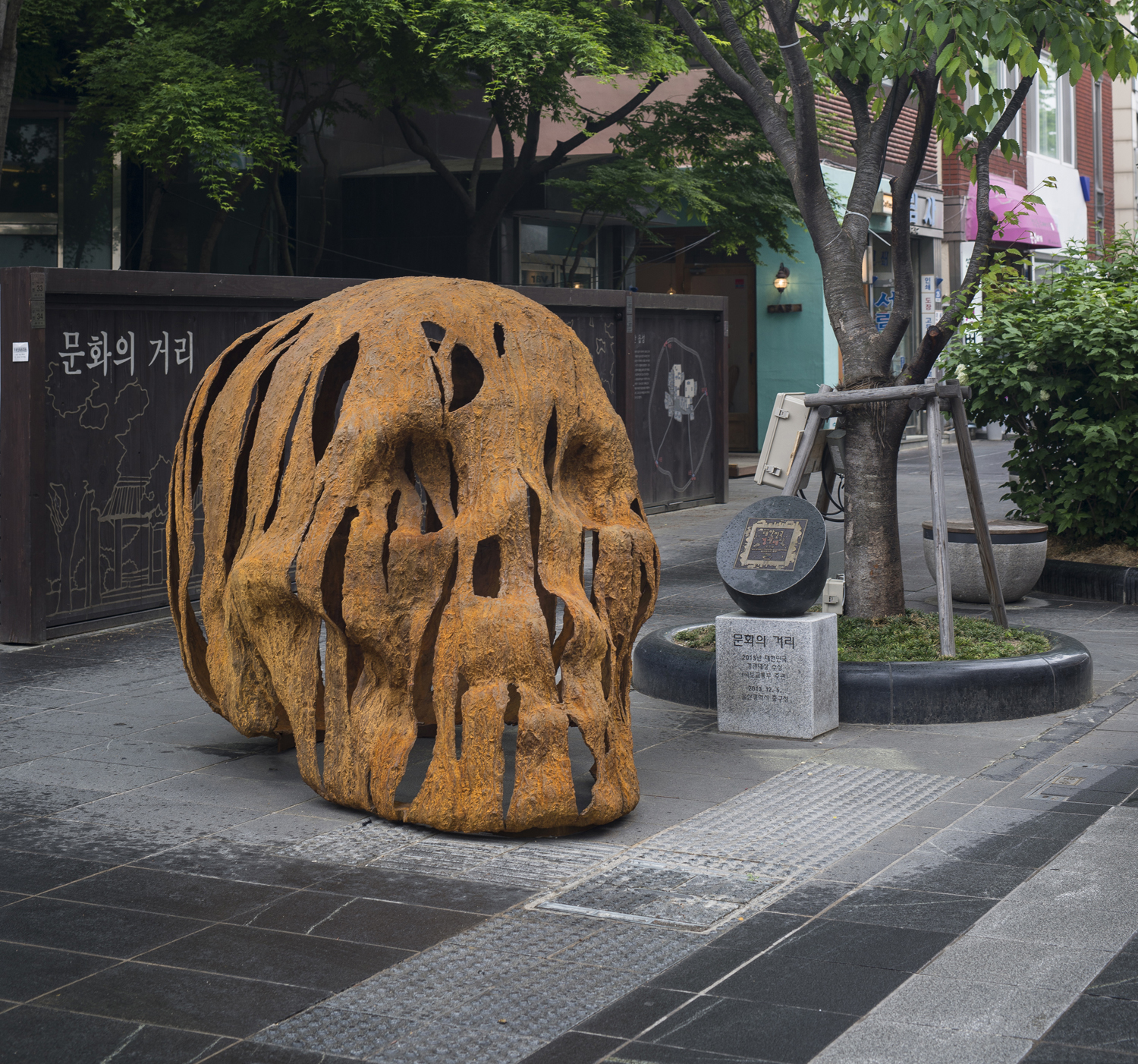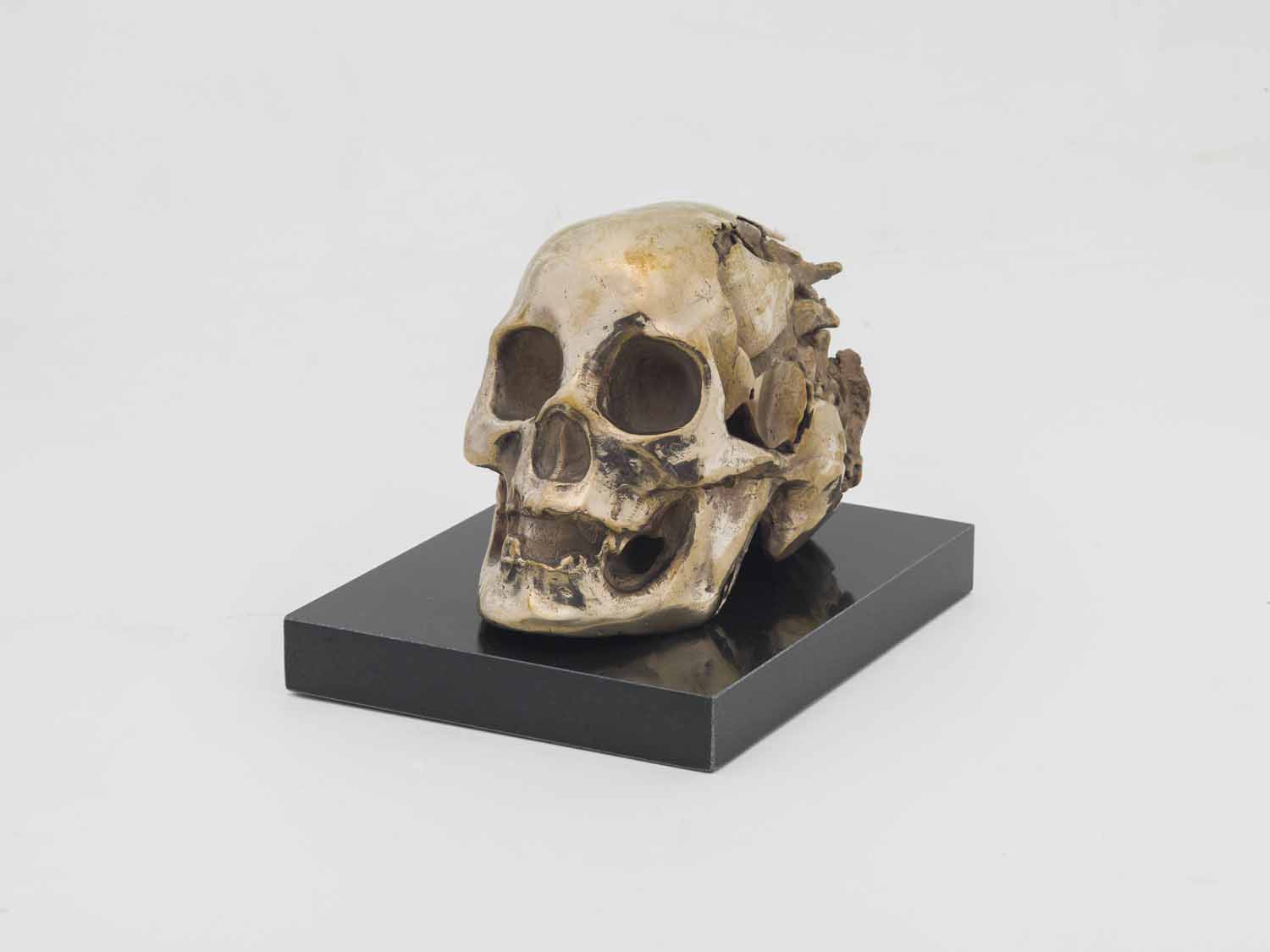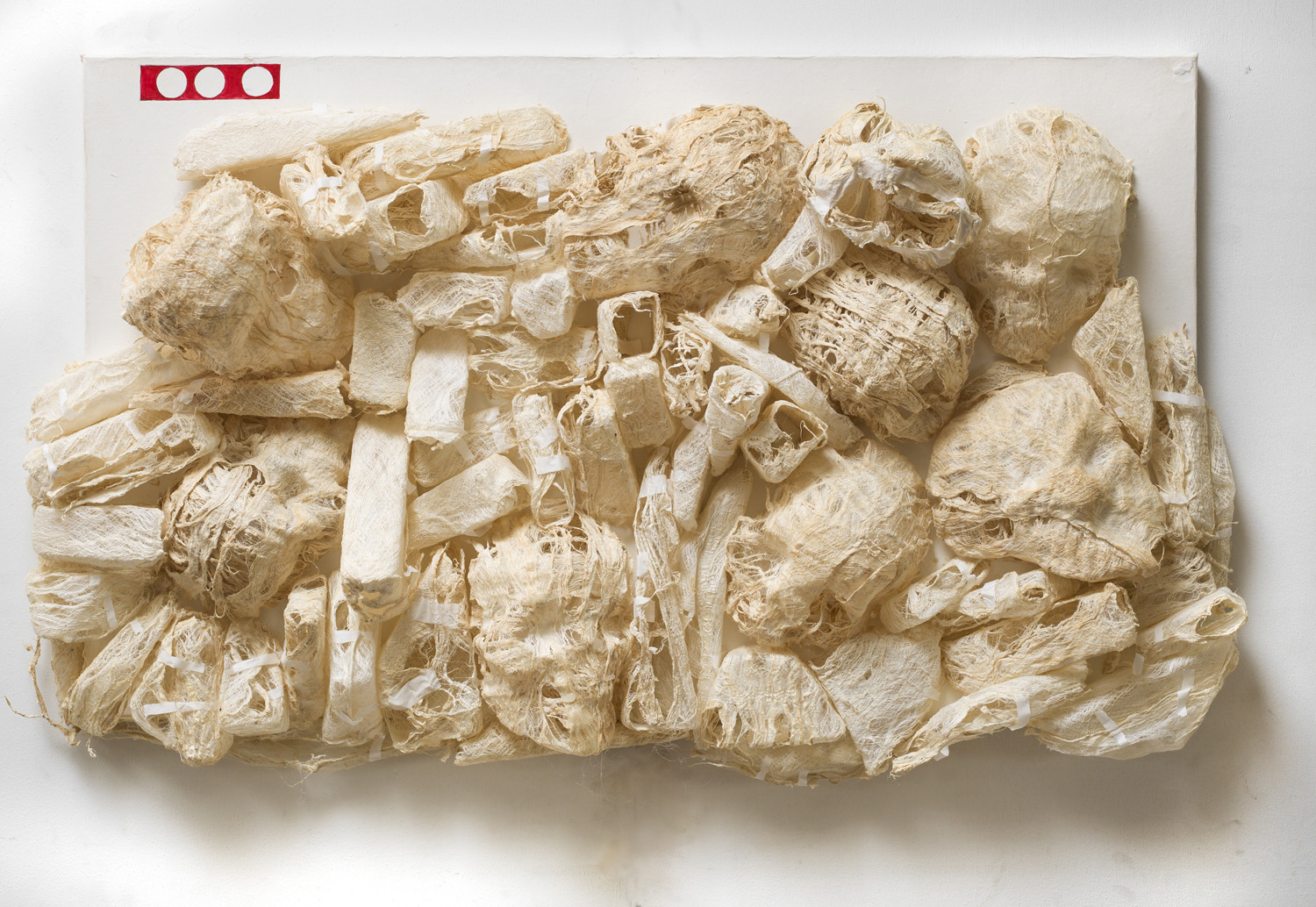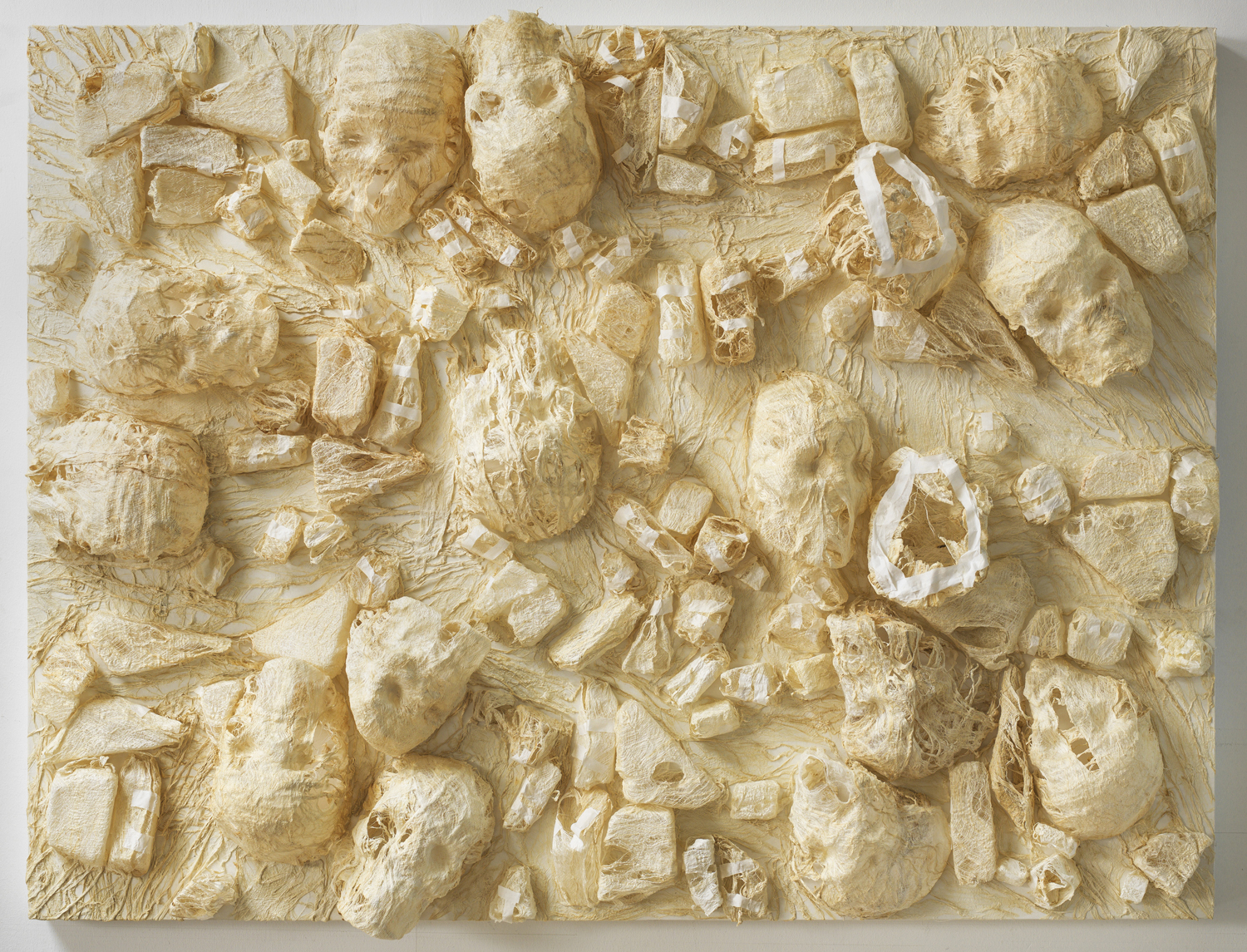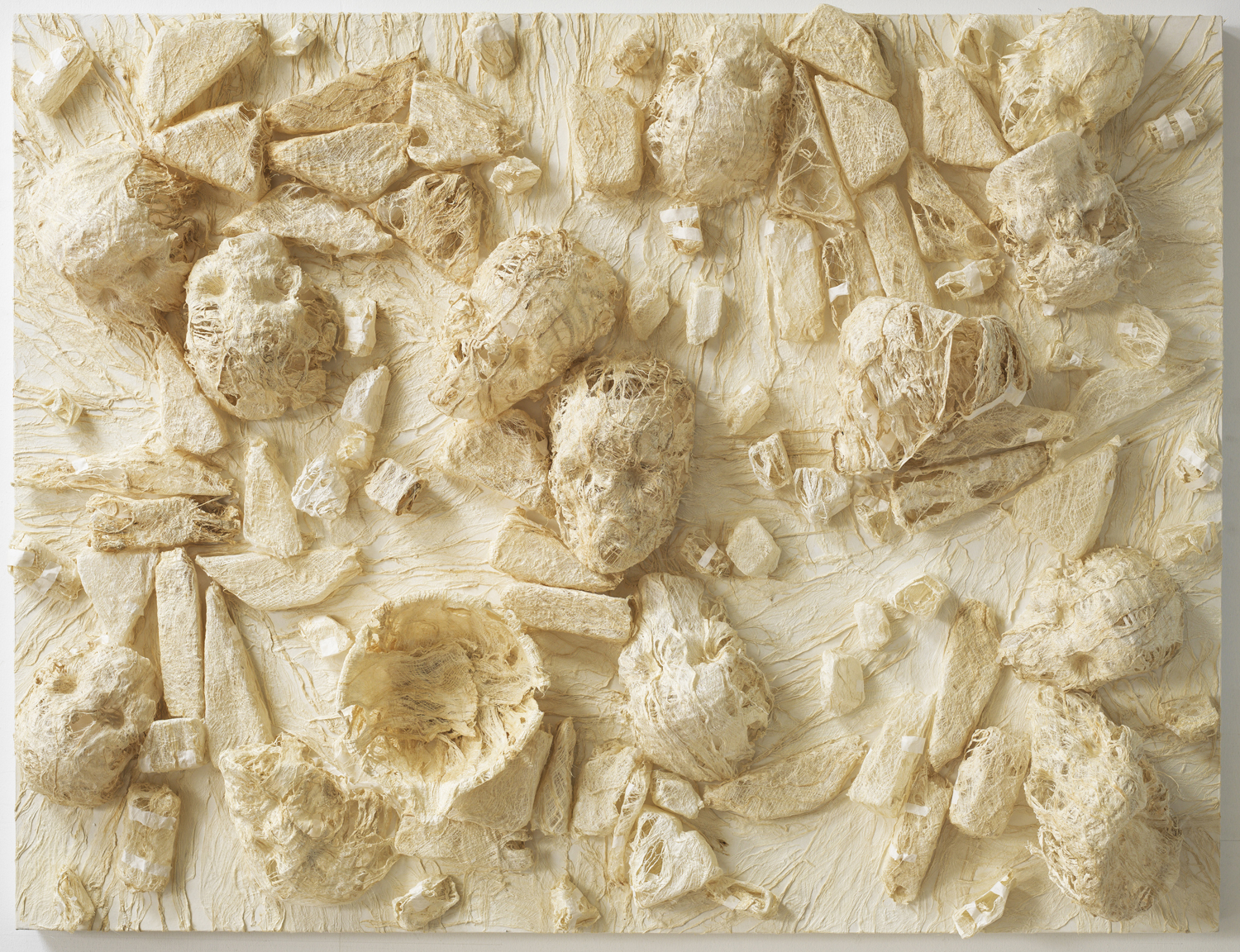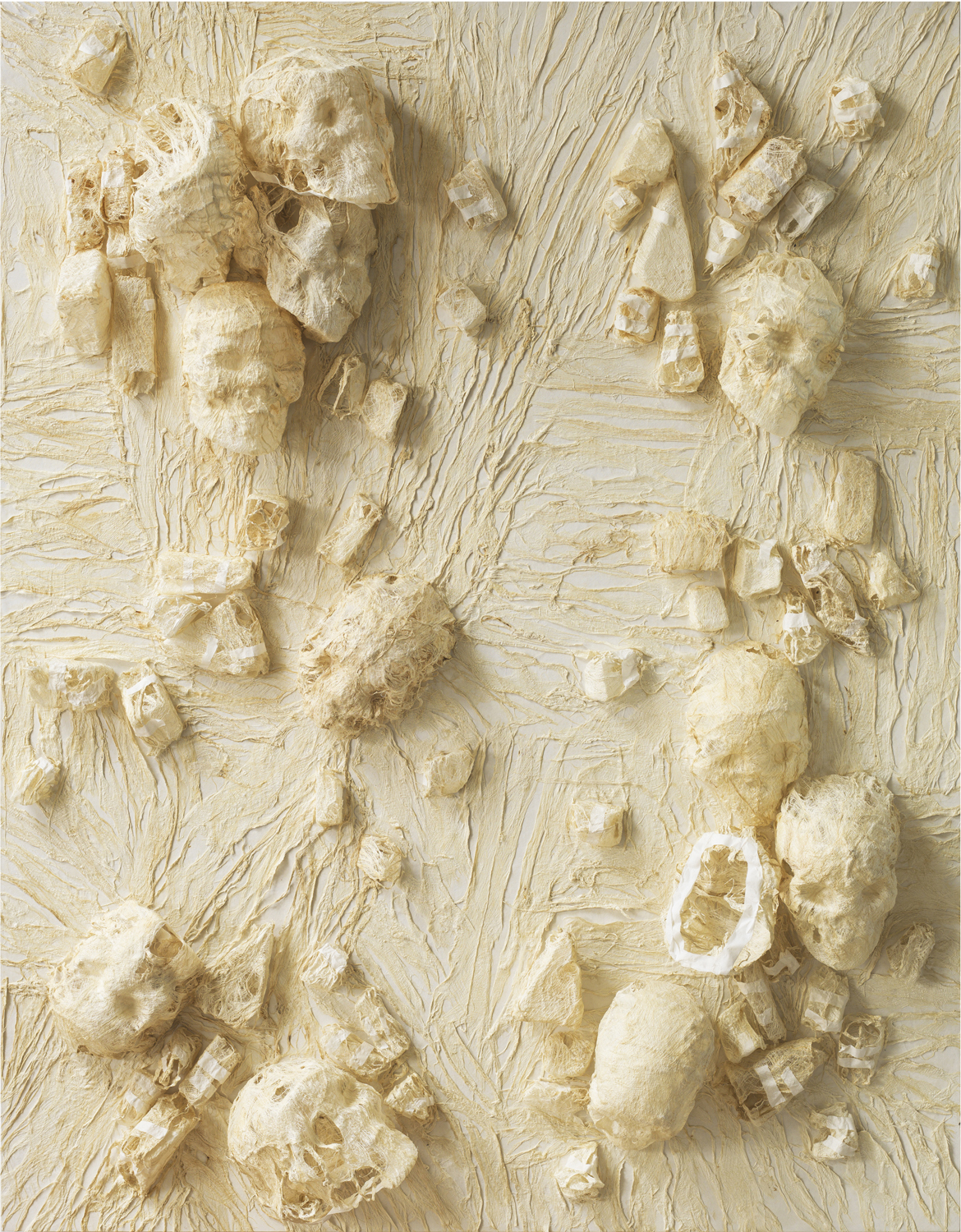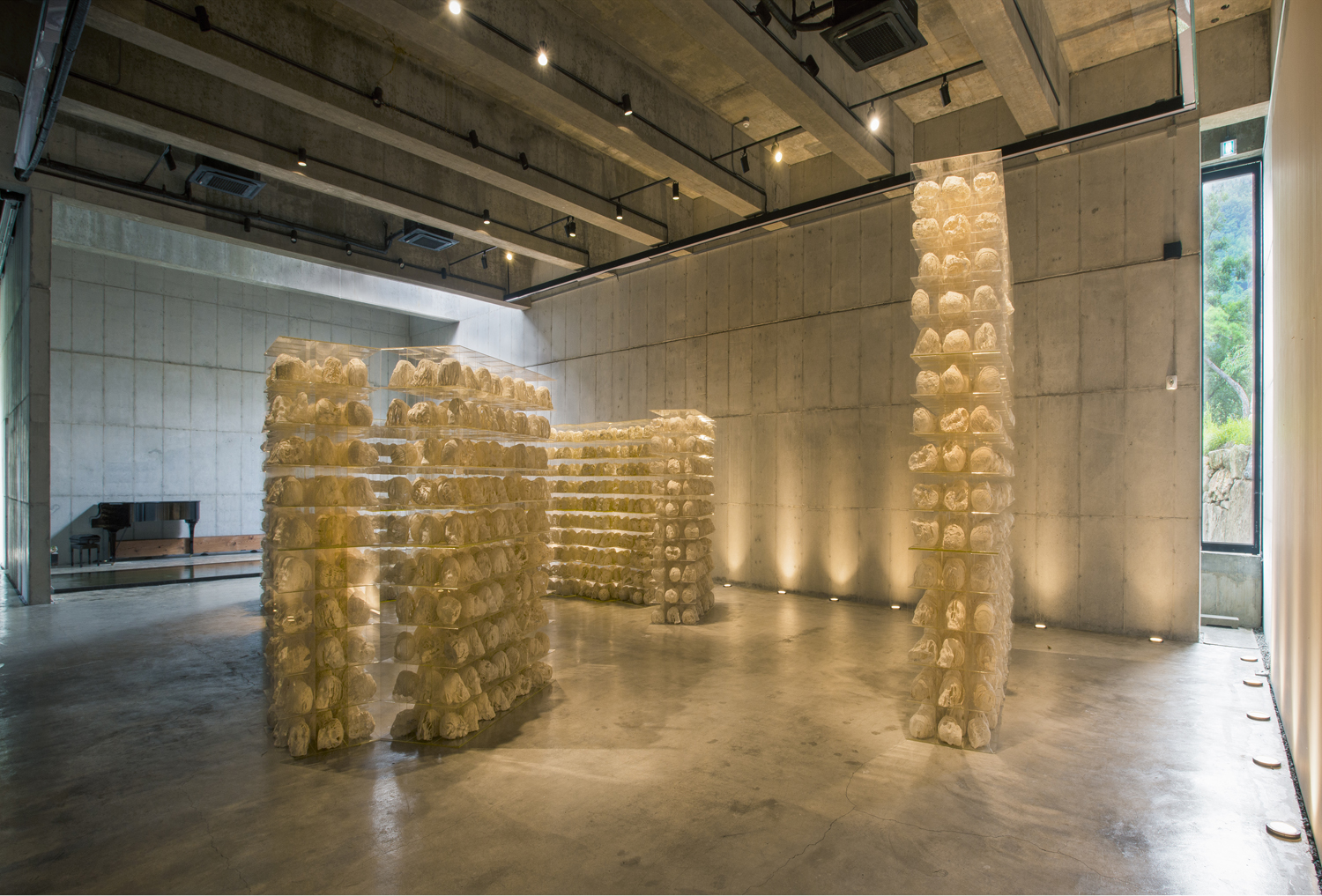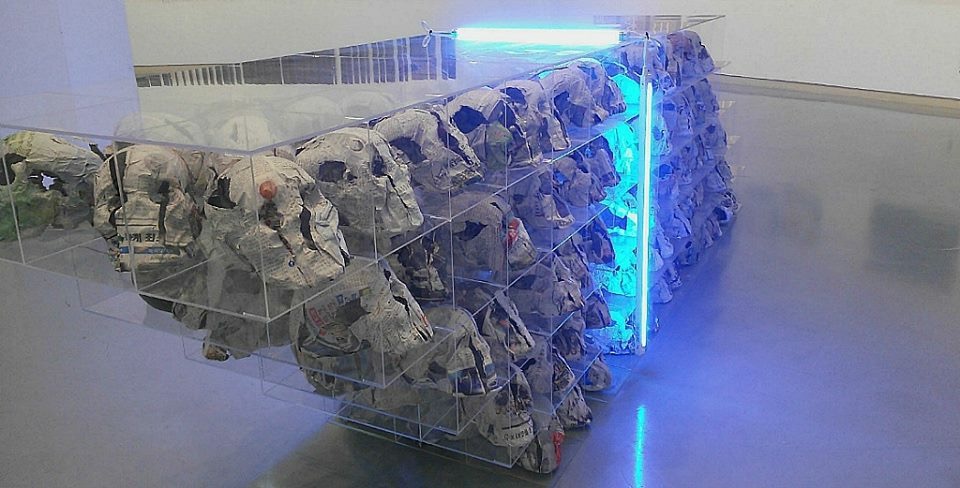.jpg)
kwonjungho , Cyan Museum of Art
Birth
1944, Chilgok
Genre
Painting, Sculpture, Installation
Homepage
Evolution of the death image
'The gate led through the future', new attempt of Kwon, Jung-ho is using some stack of skull piles as a monument, or formatively constructing common life of a contemporary man who think of oneself as an apocalyptic tomb. Skull used as a main medium is also a signifier that shows partial absence with vagueness of existence and conceptual substance. It is a permanent level of existence but replaced to materiality so spiritual existence is divided out. It is a signifier where it ended. It is a factor that awakens metaphysical border of existence in front of a blank wall without choice, and it is another name for the death. Human beings can get awe for supernatural thing only when they encounter the death. And image of the world floating between invisible things and concrete things is created. This is related to the fear for extinction and absence. Presenting and replacing something by creating image is a ancient tradition of human being, and it is the only method to express invisible things visually to comfort themselves. And they will naturally gain religious impulse and formative desire in front of the logic of death that cannot be overcome. To encounter the death becomes a paradoxical factor that encourages dynamic of the life. Were it not for encountering the death, the life will remain in only practical and descriptive territory. There will be no reflecting on past or vision on future. And also there will no metaphysical factors that can reveal essential humanity in the center of our life. No religious impulse, no sublime of formative on general art, and no philosophical recognition that asks origins of every causality and existence would birth. In result, the death is a link that enables all dialectics in the reality.
The death makes us see the essential rule of the world, before the aggregates of various factors that sustain reality. Generally we combine visible and predictable subjects based on a category we construct to overcome the fear of invisible thing. So we interpret and react on the attitude on death in the imaged visible world that is the opposition of invisible world. So it is natural that we have believed that invisible forces that align the world are showed through the death of a human. Mummy of ancient Egypt can be an example. Mummy should take the role of linking life and death in the point of contact in the belief of ancient. 'Gate through future' of Kwon, Jung-ho also begins in this point. But His work implies a more forward-looking and determined view. It is 'Avoiding all prejudice of death'. If we create other criteria of category from the death, and in result it will be something linked to the theory of continuous life, and finally it will bring about self-contradiction of death that death can be no longer a death. This attitude of Kwon, Jung-ho seemed to be based on personal experience and consideration, but it is also related to the primal origin of visual art. Visual art can be begin only when the will for overcoming space and time and body, and the fear for transcendence can be overcome in the time. So the death Kwon, Jung-ho uses as a base for creating his formative logic is not a certain death, but a death as a phenomenon that is repeated in common history. And the death is not a weak death showing individuality and shackled by the logic of life, but a implication for new horizon of the world as the concept of relation in Buddhism.
In the real world, attitude on death is contradictory. One separates one's death from deaths of others. This contradiction of protecting oneself from other deaths is developed to selfish synecdochism of something that should be avoided, pit of disgrace, aggregate of something negative, or essence of darkness. And in reality the death of other is classified by those who see this death. And the focus is based on the cause of death. Holocaust monument in Berlin and skull pile of killing field in Cambodia is some kind of monument for unilateral death without protest. Reflects on negative side of human being including massacre, terror, insanity is dominant. National Cemetery in Dongjak-dong, Seoul monumentalizes positive side of human being including devotion to the nation, contribution, and sacrifice. We are accustomed to those classifications, but if we rethink of this classification strictly, this is an error of ignoring the subject of death. If we premise those functions inside the death, the death becomes a part of life without remaining in the territory of death. This is a self-contradiction. The contradiction of objectifying death without discarding the criteria of real life can be an arrogance of the living. Trend of evaluating a death in the view of the living has been repeated in the history. Even the result of those evaluations can construct public moral and maintain the order, but creating rhetoric of heroic, disgrace, valueless is still anti-natural act of restraining the liberty of death, as it is applying norms of the living to territory of the death. Moreover, the attitude on death can be varied in various era and society. Religious background and view of the world are also meaningful. It seems that those traditions of death have provided some unbearable thoughts for Kwon, Jung-ho. He thinks that death is an equal destiny for all who live, and it is a function that interlocks the world continuously. Criterion and norms of real world is useless. And Kwon, Jung-ho thinks that absolute death should not be ended as a collapse, but should be a arousal of new vision. His faith is expressed in those series of object works using skulls. Skull object for him is not an evidence of absence and extinction, but a symbol implying life and death, symbolizing something over there.
Concreting this awakening, he has made more than 2300 Dakpaper skulls. Repetition of formation based on handcraft has important meaning that it reminds of process and cycle of death. It is repeated endlessly, but it is just describing the form of death related to the world as an image, not trying to explain the death itself or to supplement the loss of subject. It repeats existential questions repeatedly. So this process of making skulls through complicate process creates skull as an image of death, but the image itself is not a goal but just a kind of carrying out of consideration on existence. He believes that the image without conceptual view can be constructed and new horizon that is not a life nor a death can be opened in this process. In some view, the thing he wants to express by this impulsive and irrational attitude can be a seeking for the best method to the law of nature, or the law of universe by removing subjective view. All beings are subject to death. No matter what it was, it will be ended. Avoiding the end is impossible in the logic of real desire. As we cling to material world, the end will be repeated. So Kwon, Jung-ho seeks for an object without desire and material. He should get rid of obsession over the fear of death or the eternity to completing the work. Vladimir, an astronaut of USSR stated that the earth seemed to be a fragile thing as he had lived a year in the space, looking down the earth. This statement is a statement of experiencing the halt of idol, experiencing the overcome of primal trauma of existence. For Kwon, Jung-ho, Dakpaper skull is a selection for visualizing internal meaninglessness of life and death. And it is another meaninglessness concretely reacting the meaninglessness. I can assure that this view is based on the wisdom of understanding the mechanism of universe and extension of the nature, free from the trap.
Kwon, Jung-ho makes form by sticking glued Dakpaper on skull model. After drying, he collects dried form of Dakpaper from the model. The aspect of this work seems like extracting the original hovering around duplicate, rather than creating duplicate from the original. It is due to original texture and color of Dakpaper Kwon selected. And Kwon, Jung-ho intentionally creates crude object, which can barely show its shape. This is partly because that he want to avoid the principle of formation that straight shape can be reactionary, but the more important reason is that he want to weaken the materiality to amplify potentiality of communication with hidden side of the form. The result was successful. The skull with holes linking inside and outside varies by reacting lighting, thing, space around. Skulls are displayed by 3 rows and 4 columns in acrylic cases, and it brings a kind of optical illusion of mixed image as the border between front row and rear row seems so vague. So each shape is moving and mixing together by the moving of sight, and making illusions in new level. This wave of illusions is very sensitive and flexible. Cortical structure of formation is established without any conceptual logic. Kwon, Jung-ho plans to display 60 objects in acryl case of 3 rows, 4 columns and 5 levels to establish a large installation of one unit of accumulation. Each unit can be a museum, or can be an overwhelming monument as the arrangement. The origin of ancient monument is the tomb. The origin of museum is also the tomb. Qin Shi Huang Di's tomb constructed in BC 200, Pyramid of Egypt, Catacombs of church can be evidences. So Kwon, Jung-ho's plan is to cover all origins related to death, and to establish an independent altar of death dispelling binarity of opposing values in the point of contact.
“I make private work but I am not a formalist. I make forms in the mind and I do not lose my mind in the form. This is the thought possessing me. It is my faith and conviction." This is Kwon, Jung-ho's confession, implying his thought and capacity. As described above, his aesthetic flexibility can be understood in his various formative experiments. One principle that he has been maintained in the process is the question for the existential style of life. As one live in the real world, the life cannot secure the objectivity. And the substance can only be inferred by the feedback of reflection. As this inferred substance is a reflection on fictional mirror of death, it cannot overcome the limit of proof. So we need a point that is not lie on either side of life and death. Kwon, Jung-ho sets his object as an image of communication implying life and death, and expresses that "the new horizon of the world is opened based on the foundation of the cycle and its accumulation of life and death".
Hong, Soon-whan(Director of Gallery KUNSTDOC)






